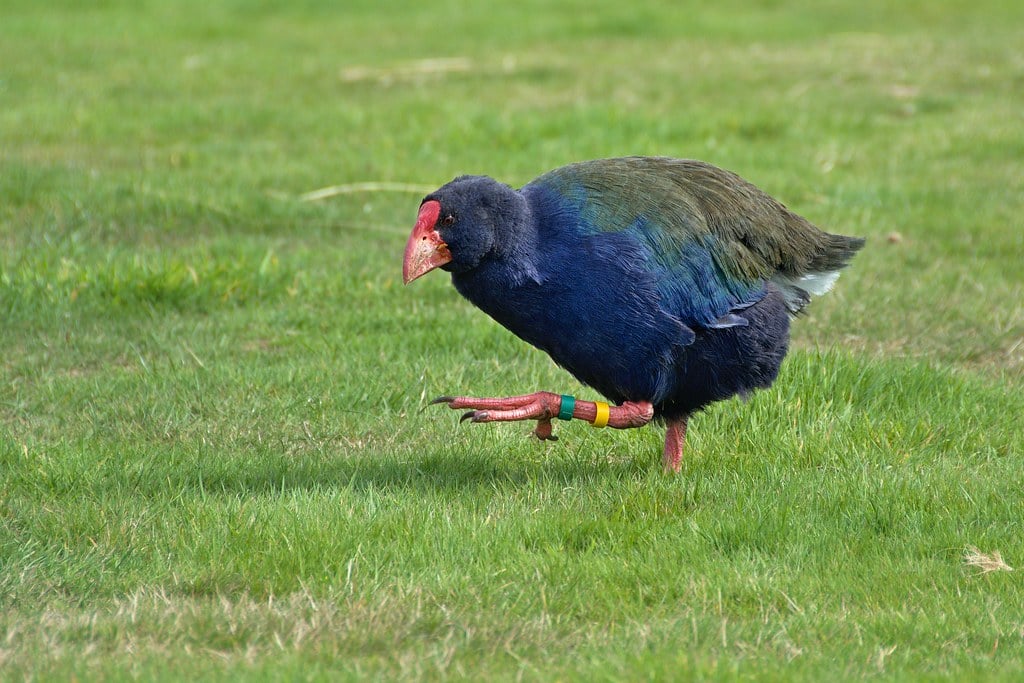It can be tricky for biological conservationists to determine if the last surviving individuals of a species are still around in the wild. Therefore, we may wonder: is the species truly extinct or would they be better described as “lost”? And how would we define a “lost species” and go about rediscovering them?
—
A recent paper published in Animal Conservation provides the first assessment of just how many terrestrial vertebrates – mammals, birds, amphibians, and reptiles – can be classed as “lost taxa.” The term is used to describe species that have not been “reliably observed in >50 years yet are not declared extinct.” After consulting the International Union for Conservation of Nature’s (IUCN) Red List and salient literature, the authors identified 562 such species. These numbers include 130 mammals, 38 birds, 137 amphibians, and 257 reptiles. Other sources indicate that, globally, there are over 2,200 missing organisms, unobserved by humans for decades.
This study highlights the importance of focusing on lost species as a distinct group whose conservation status is unclear. The authors identify specific regions with elevated rates of lost taxa, where future surveys should ideally be focused. For instance, over 90% of the world’s missing species are confined to the tropics. And as predicted by the authors, megadiverse countries (holding the greatest range of biodiversity) were found to be missing the most taxa, with Indonesia, Mexico, and Brazil being the top three. The paper emphasises the importance of funding for targeted fieldwork aimed at either (1) rediscovering these species or (2) definitively classing them as no longer extant.
But how exactly do biological conservationists decide upon a conservation status, such as extinction? Several factors can complicate the classification. For instance, some life forms are very rare or reclusive by nature. And if the usual habitat of an organism is particularly inaccessible, dangerous, or remote for humans, it is not uncommon for these creatures to go many years without being witnessed by anyone. These difficulties, among others, mean that numerous species once deemed extinct have ended up being rediscovered “decades or even centuries after an individual was last conclusively reported.” Only in rare cases do zoologists know precisely when the last remaining member of a taxon passes away.
So, how – as of 2022 – does the IUCN’s Red List classify a species as extinct? A consensus must be reached that it is beyond reasonable doubt that the final taxon member has died. To reach this determination, exhaustive surveys undertaken in the species’ usual or expected habitat (over its historic range) at proper times must fail to locate any individual. Consideration must also be paid to life cycle and form. It is important to adhere to strict guidelines before ruling a species extinct, as you don’t want to abandon a species too soon. Interestingly, in the past, the proposed criterion for extinction was simply that the creature hadn’t been seen in 50 years or more. Now, this paper uses the 50-year benchmark to identify missing species. Other sources, however, use different time ranges to classify a species as lost, e.g., 10 years or longer.
Fieldwork surveys dedicated to these lost taxa are recommended. The study also suggests greater use of the Red List’s “last seen” data to aid fieldworkers and conservationists. As of now, this data is only required for species categorised as either Extinct, Extinct in the Wild, or Critically Endangered. Thus, the “last seen” information was available for less than 15% of the 562 lost life forms. Other recommendations include broader and more consistent use of the “Possibly Extinct” marker by the IUCN.
The conducting, funding, and dissemination of fieldwork-driven research are imperative to biodiversity efforts. Unfortunately, publications in conservation science journals that are derived from empirical field investigations have decreased by 20% from the 1980s to the present. The paper’s authors advocate for reversing this downward trend to develop greater insights into species lost. And a proposed “Latimerian knowledge shortfall” could be handy in recording and keeping track of these taxa.
The authors of the study, as cited in Science Daily, have said that “while theoretical estimates of ongoing ‘extinction rates’ are fine and good, looking hard for actual species seems better.” They hope that their study will inspire conservationists to focus on these lost species. In particular, the researchers advocate for survey efforts concentrated in the “hotspots” they’ve identified – megadiverse countries with the most missing creatures.
You might also like: 10 Australian Extinct Animals That Came Back from the Dead
How might we best ideate appropriate policies and practices to combat an increasing number of species becoming lost, endangered, or extinct? And when focusing on lost taxa? According to wildlife conservation non-profit Re:wild, there is “no one-size-fits-all solution to the interrelated crises of wildlife extinctions, climate change and pandemics.” The group stresses that, to implement the most effective and practical conservation policies, all vested parties must agree upon context-specific solutions. These parties, including conservation organisations, government, and local and indigenous communities, must collaborate and mutually agree upon feasible strategies.
Lost species have disappeared in widely varying regions and countries; myriad factors must be taken into consideration. For instance, the local socio-economic and political landscape, science-based evidence, local resources, current biodiversity threats, and “whether the species or place already has a champion” should be acknowledged. As with the study’s authors, Re:wild also emphasises the importance of decision-making based on science (preferably, extensive fieldwork). Thus, dedicated empirical surveys must be undertaken in the hotspots to determine the true conservation status of lost taxa.
In consultation with relevant groups and representatives, Re:wild has ideated appropriate approaches to solving numerous environmental concerns, such as lost taxa. These solutions include science-based policy-making and decision-making (as discussed earlier). They draw upon this empirical data to deepen their knowledge of global biodiversity and how to sustain it. These findings also inform their prioritisation of conservation efforts. Another suggested solution is remote area exploration, which helps in pinpointing where exactly their efforts will yield the greatest results for “imperiled species and places.” Additionally, the non-profit also engages in numerous other strategies, such as rapid rescue, which involves responding to and remedying arising conservation threats that require immediate action.
Although the Anthropocene era, also known as the sixth mass extinction event, is resulting in the extinction or endangerment of numerous creatures, there is still hope for those better deemed “lost” than extinct. For instance, Re:wild celebrates eight rediscovered species on the page Lost Species Found. Their list includes the silver-backed chevrotain (missing for 28 years) and the Fernandina giant tortoise (missing for 113 years). Despite being unobserved by human eyes for decades, many lost species may have surviving members still extant in the wild today.
Featured image: Takahē, a flightless bird thought to be extinct was found again in 1948. Photo by: Tomas Sobek/Flickr (CC BY 2.0)


















